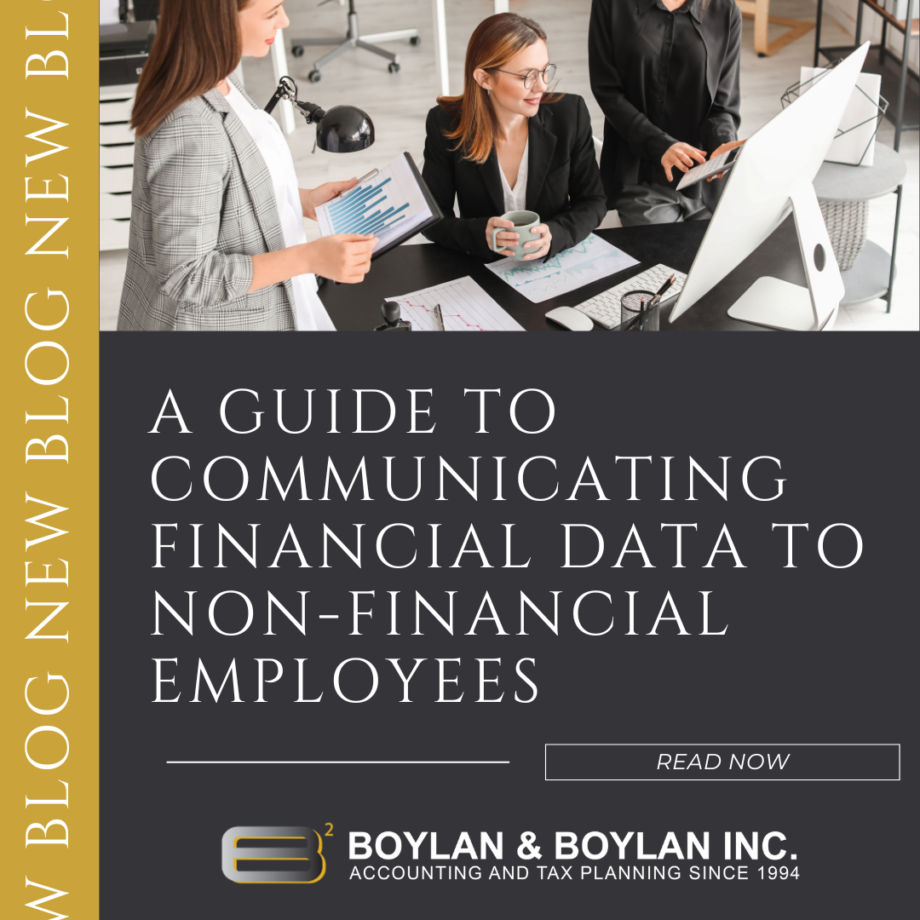In any business, the flow of financial information is pivotal. Yet, often, this crucial data is tangled in jargon and complexity, making it inaccessible to those without a finance background. At Boylan and Boylan, we understand the importance of demystifying financial data. This blog explores effective techniques for communicating financial information to non-financial staff, ensuring everyone in your organization can contribute to and benefit from deep business insights.
1. Start with the Basics: Before diving into numbers, it’s essential to ensure that all employees understand basic financial terms and concepts. Workshops or short training sessions can be invaluable for explaining fundamental principles such as revenue, expenses, profit, and cash flow. Using simple analogies and real-life scenarios can help cement understanding.
2. Use Visual Aids: Charts, graphs, and infographics can transform abstract numbers into clear visual stories that are easier to comprehend. Visual aids can highlight trends, compare figures, and break down budget allocations without overwhelming the viewer. Tools like QuickBooks offer excellent functionalities to create compelling, digestible financial visuals.
3. Tailor Your Communication: Not all departments require the same financial details. Tailor your communication to the audience’s needs. For instance, the marketing team might benefit from understanding budget allocations for campaigns, whereas the HR department might need insight into payroll management and resource planning. This targeted approach not only keeps your communication relevant but also more engaging.
4. Encourage Questions: Create an open environment where staff feel comfortable asking questions about financial data. Regular Q&A sessions can be a safe space for employees to voice confusion and seek clarification. This not only improves understanding but also encourages a more inclusive atmosphere where everyone feels valued and informed.
5. Implement Regular Updates: Instead of overwhelming staff with annual or quarterly dumps of financial data, provide regular updates. This could be monthly financial summaries or even brief weekly insights into particular metrics. Keeping the financial dialogue ongoing helps demystify the data and makes it a regular part of workplace culture.
6. Use Storytelling: People connect with stories far better than raw numbers. When discussing financial results, frame them within a narrative. For example, relate a boost in sales revenue to a successful marketing campaign or connect a decrease in expenses to efficient cost-saving strategies implemented by the team. This makes the information more relatable and memorable.
7. Leverage Technology: Utilize software tools that can help non-financial staff interact with financial data more intuitively. Programs like QuickBooks for bookkeeping or easy-to-use dashboards that integrate with your financial systems can provide real-time, interactive data exploration. This hands-on approach can significantly enhance understanding and interest.
8. Simplify Reporting: Complex financial reports can be daunting. Simplify them by removing unnecessary jargon and focusing on key metrics that are relevant to the audience. Summaries, highlighted areas, and bullet points can help emphasize the important information without getting lost in the details.
Conclusion: Effective communication of financial information to non-financial staff doesn’t just enhance understanding—it empowers your entire team to make better decisions and contribute more effectively to the organization’s goals. At Boylan and Boylan, we believe in building a bridge between finance and the various arms of your business to foster an environment of shared knowledge and collective growth.

